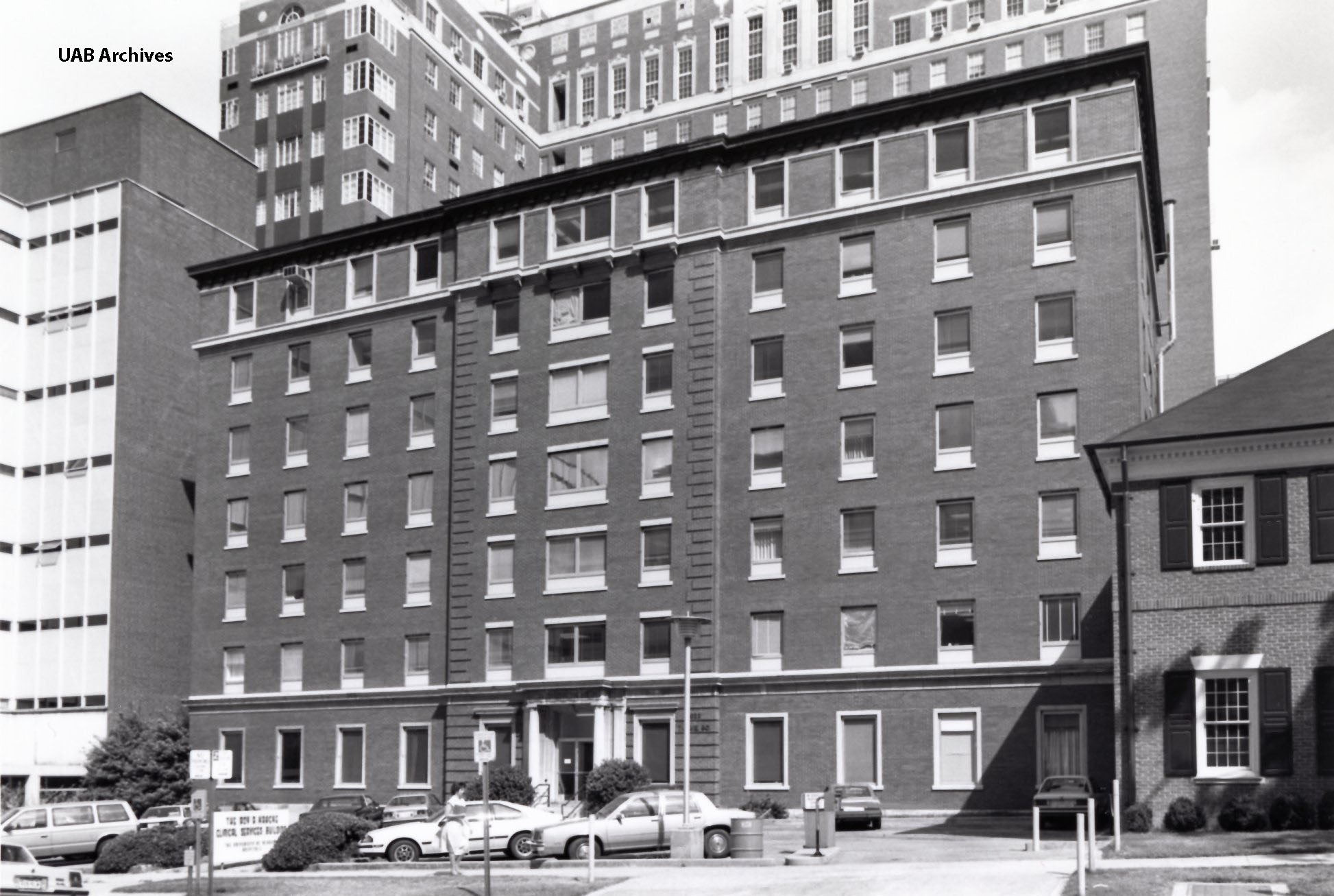 Roy R. Kracke Clinical Services Building circa ince its initiation, the UAB School of Medicine has committed to continual growth of research, patient care, and education. Central to this growth is state-of-the-art facilities that serve the needs of educators, students, trainees, researchers, and physicians.
Roy R. Kracke Clinical Services Building circa ince its initiation, the UAB School of Medicine has committed to continual growth of research, patient care, and education. Central to this growth is state-of-the-art facilities that serve the needs of educators, students, trainees, researchers, and physicians.
To support the advancement of the School of Medicine as a national leader of excellence, several facilities on campus are undergoing renovation or remodeling.
The new Altec Styslinger Genomic Medicine and Data Sciences Building will require that a few buildings undergo renovation or demolition to add square footage to the space—one of which is the Roy R. Kracke Clinical Services Building (Kracke), located at 1922 7th Ave S, Birmingham, Ala., which will be demolished in the winter months of 2021.
Kracke, one of the oldest buildings on campus, was first built as a dormitory for nurses of Hillman Hospital and nursing school students in 1929. Nursing school students who lived in the residence were enrolled in a three-year program called the Hillman Hospital Training School for Nurses, and received a diploma at graduation. In the 1930s, the nursing school program enrolled around 12 students per year.
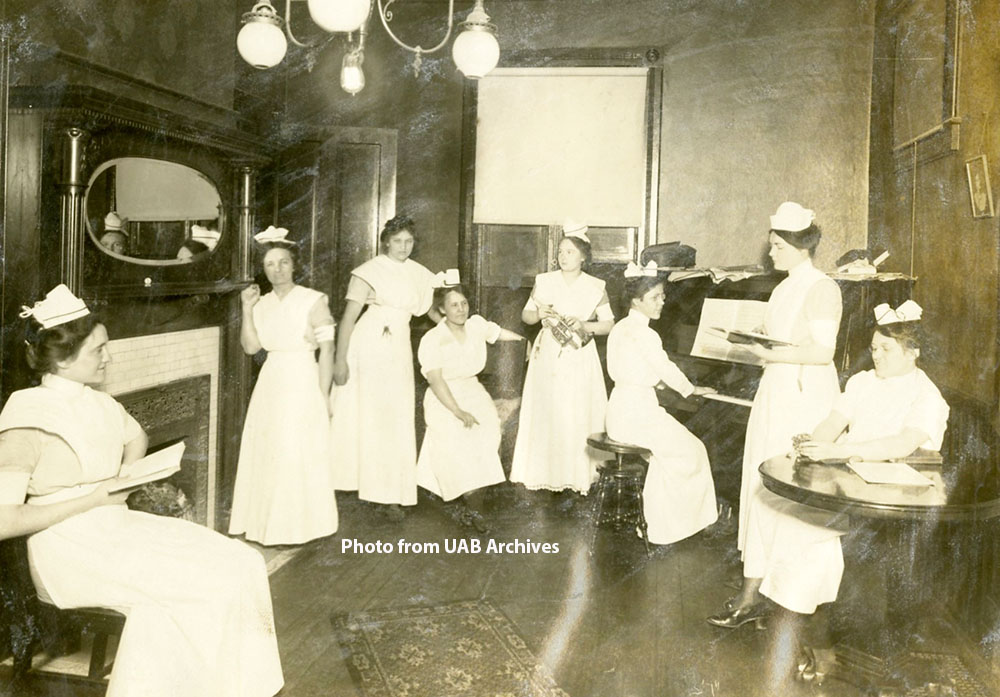 Nursing students in Hillman Hospital’s nursing residence“The Hillman Hospital Training School for Nurses opened soon after the 1903 completion of the new hospital facility,” writes UAB Archives in their Image of the Month series.
Nursing students in Hillman Hospital’s nursing residence“The Hillman Hospital Training School for Nurses opened soon after the 1903 completion of the new hospital facility,” writes UAB Archives in their Image of the Month series.
“The first class of nursing students graduated February 28, 1905, with Elizabeth Hale of Birmingham as the program’s first graduate. The hospital-based diploma school became part of the university in 1945 when the university’s medical center was established in the Jefferson and Hillman hospitals. The last class graduated from the hospital school in 1969 and the program was eliminated.”
The residence was home to Birmingham-based nurses and students for over thirty years.
On July 18, 1965, the building was dedicated to Dr. Roy R. Kracke, first dean of the four-year Medical College of Alabama in Birmingham—known today as UAB School of Medicine. “A two-day program of scientific discussion and official ceremonies marked the dedication of the Roy R. Kracke Clinical Services Building July 17 and 18 at the Medical Center,” the University of Alabama Medical Center Bulletin stated in August 1965.
The dedication to Kracke came with a number of renovations and improvements in the building, such as modernized work areas, new equipment for clinical laboratories and surgical pathology, and the first Cores laboratory. A faculty dining room and faculty lounge were also created during these renovations, providing the first on-campus haven and rest area for physicians.
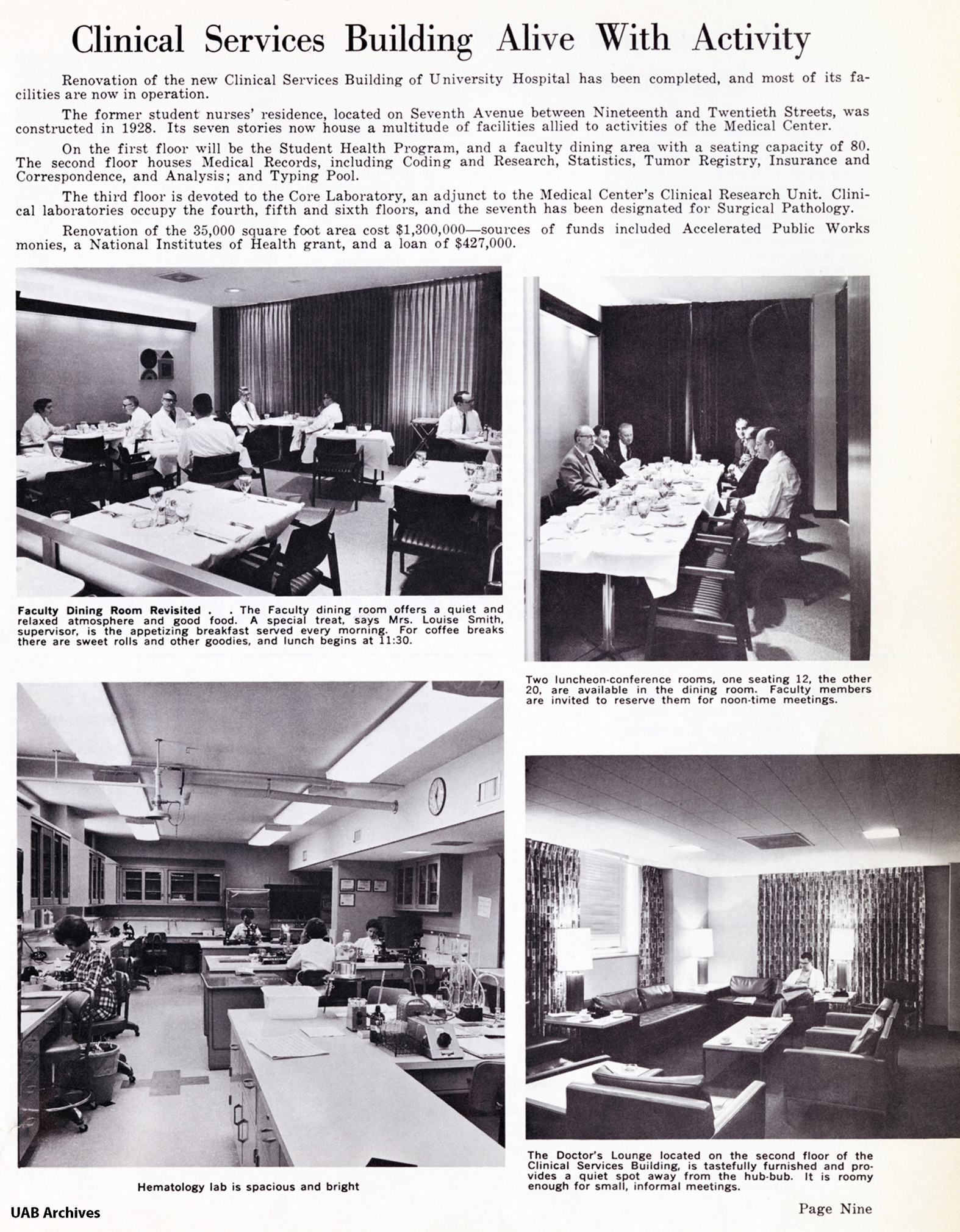 News article on Kracke's renovations in the mid-1960s
News article on Kracke's renovations in the mid-1960s
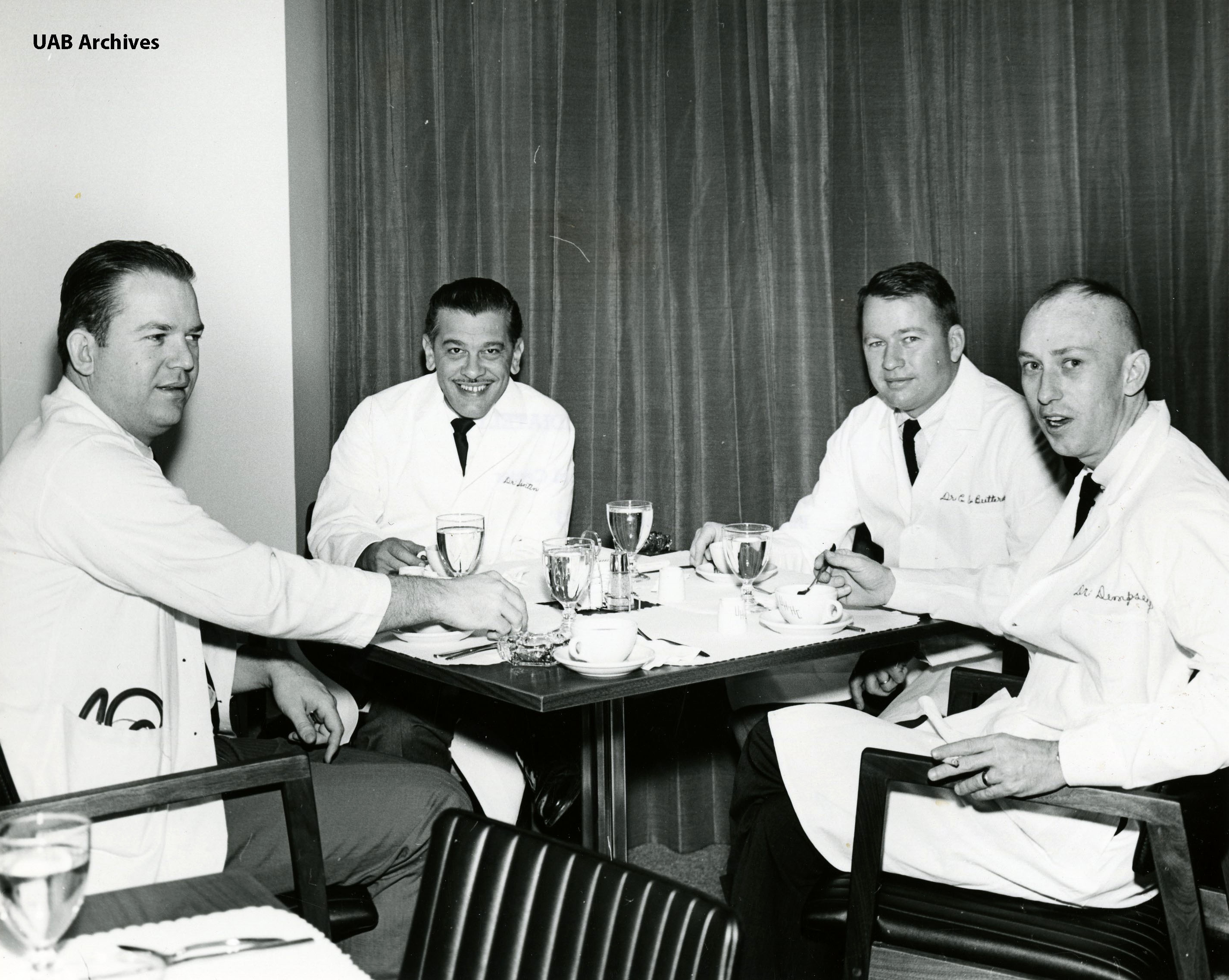 Physicians enjoy a meal in Kracke's fine dining roomKracke was a prominent, influential figure in developing what we know today as the UAB School of Medicine. Before coming to Birmingham, Kracke served as chief technician in the laboratories of the U.S. Naval Base Hospital from 1914-1919. After, he continued as a technician in Memphis before entering the University of Alabama as a premedical student. From there, he completed his medical training at Rush Medical College at the University of Chicago. Just prior to becoming the first dean of the Medical College of Alabama, he worked as professor of Pathology at Emory University.
Physicians enjoy a meal in Kracke's fine dining roomKracke was a prominent, influential figure in developing what we know today as the UAB School of Medicine. Before coming to Birmingham, Kracke served as chief technician in the laboratories of the U.S. Naval Base Hospital from 1914-1919. After, he continued as a technician in Memphis before entering the University of Alabama as a premedical student. From there, he completed his medical training at Rush Medical College at the University of Chicago. Just prior to becoming the first dean of the Medical College of Alabama, he worked as professor of Pathology at Emory University.
He served as dean and professor of Clinical Medicine at the Medical College of Alabama in Birmingham from 1944 until 1950. A native of Hartselle, Alabama and the grandson of Georgia native who enlisted with a Union company in the Civil War, he was a humble civil rights advocate during a turbulent era. Kracke’s beliefs and compassion for inclusivity planted seeds that have yielded a strong core value system for today’s UAB School of Medicine.
He utilized his leadership role to improve racial equality in the practice of medicine in the Deep South, enrolling three Black/African American women into his nursing program in 1947 and continuously working to further the goals of Black/African American physician groups. Kracke also created opportunities for women physicians—naming Dr. Melson Barfield-Carter the first professor and chair of the school’s Department of Radiology in 1945. Three years later, Kracke appointed Dr. Alice McNeal as the second female chair at the medical college and hospital in the newly-created Department of Anesthesiology.
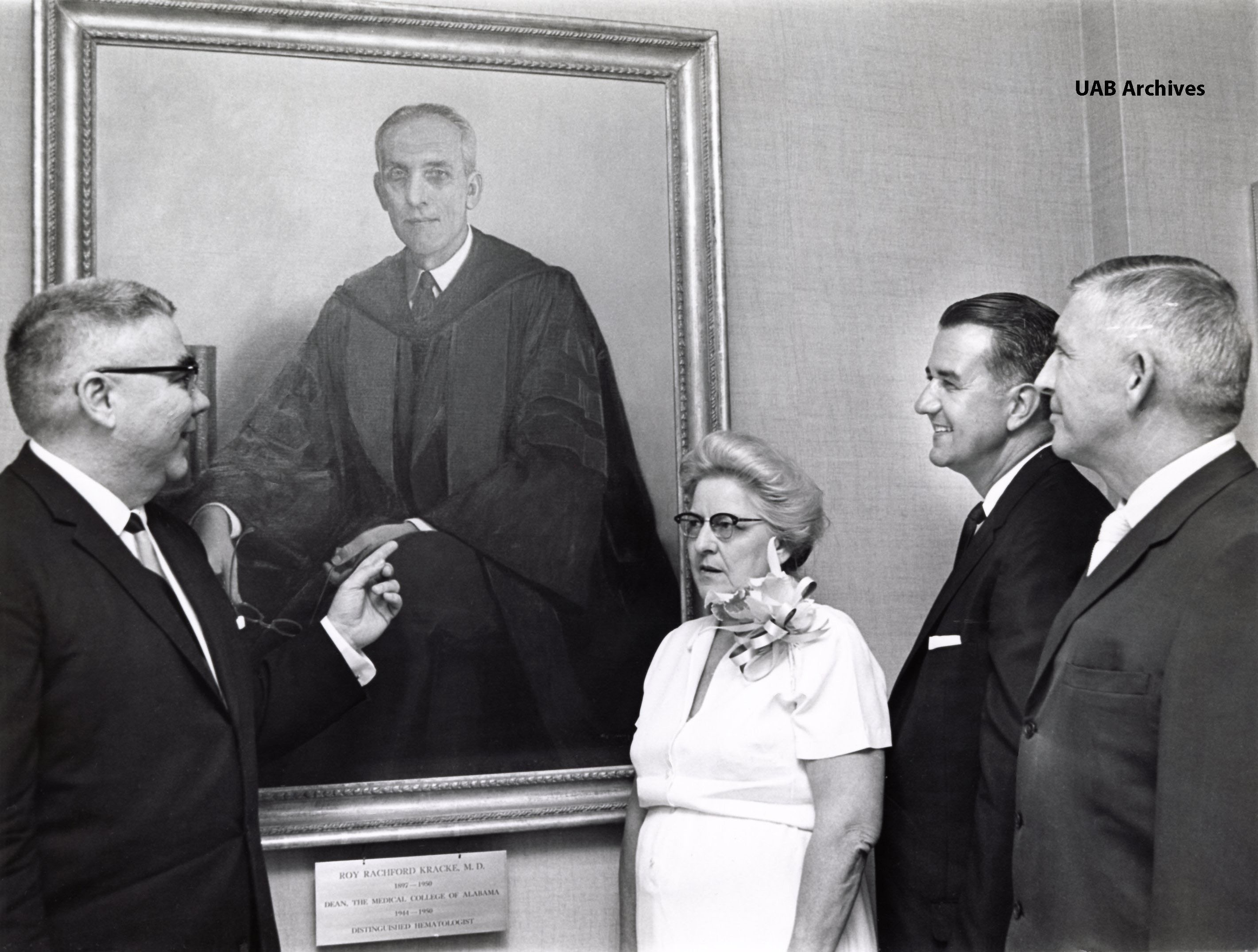 Dr. Mathew McNulty (right) with Mrs. Virginia Kracke, Dr. Frank Rose, and Dr. Joseph Volker standing by a painting of Dr. Roy KrackeKracke displayed a profound understanding of health inequities across the region, and participated in improving access to medical care in the Birmingham community. His actions and values were foundational to health equity programs at the School of Medicine.
Dr. Mathew McNulty (right) with Mrs. Virginia Kracke, Dr. Frank Rose, and Dr. Joseph Volker standing by a painting of Dr. Roy KrackeKracke displayed a profound understanding of health inequities across the region, and participated in improving access to medical care in the Birmingham community. His actions and values were foundational to health equity programs at the School of Medicine.
Kracke was known around campus for his innovation and ambition to grow the areas of education, research, and service in the health sciences. He was one of the first to lobby for a major medical center and developing a robust medical faculty. He was passionate about collaboration, especially between centers and departments. Kracke worked with Joseph F. Volker when Volker was dean of the Alabama School of Dentistry to jointly fund the basic health science departments between the two schools, which still operate today as Joint Health Science Departments. Plus, Kracke is responsible for expanding the original hospital to accommodate the needs of medical students.
The Roy Kracke Clinical Services Building has abetted the needs of researchers, educators, and physicians for the last 56 years. It has housed new discoveries, groundbreaking findings, and some researchers’ entire life’s work. The new Altec Styslinger Genomic Medicine and Data Sciences Building will be a space to continue the important work of researchers, educators, and physicians in the future, and build on improving patient care for bench to bedside studies and trials. The mission and vision of UAB School of Medicine, first shown by influencers like Dr. Roy Kracke, will continue to live in the hearts and minds of current and future employees.
Written by Mary Ashley Canevaro